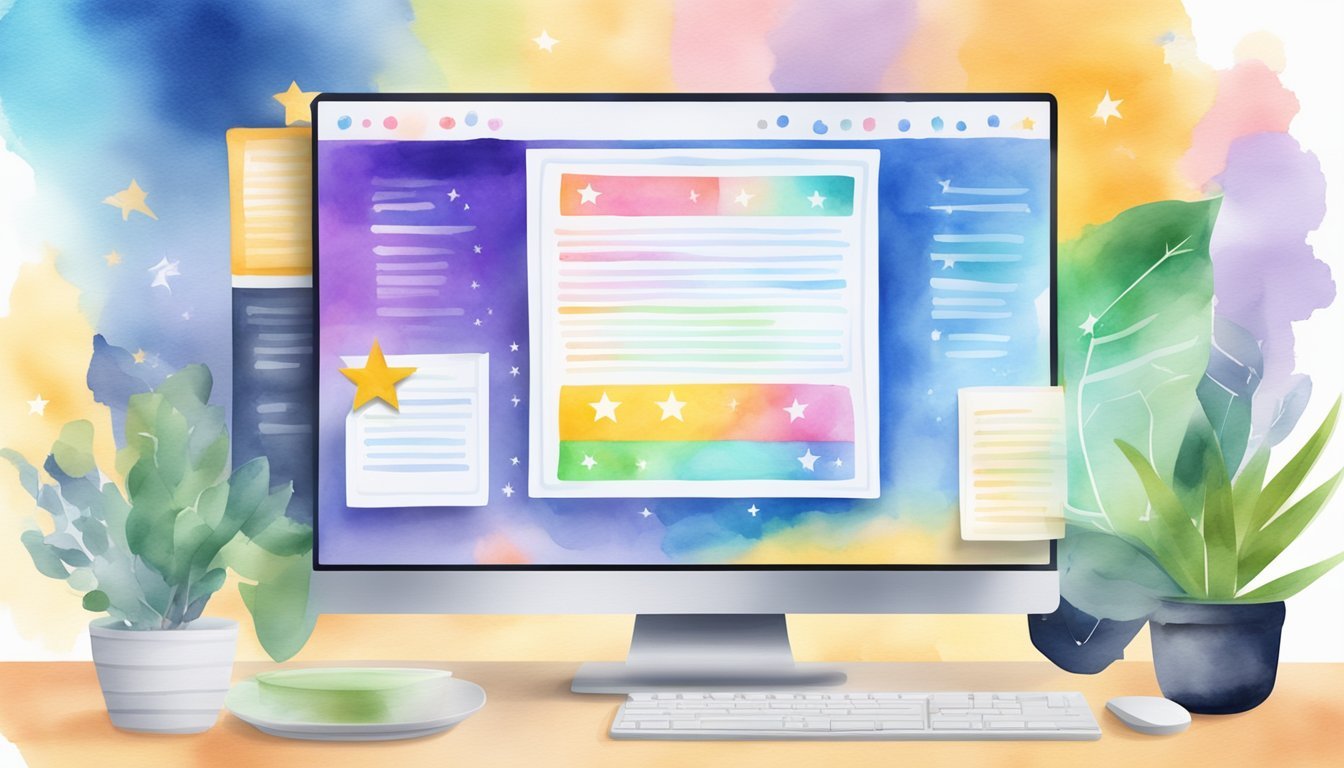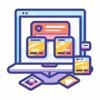3 Essential Elements of a High-Converting Sales Funnel: Boost Your Revenue Now

Creating a high-converting sales funnel is crucial for any business looking to maximize its growth and profitability.
By effectively guiding potential customers through a well-structured process, you can significantly boost your conversion rates. What are the key elements that make a sales funnel successful?

In this article, you will learn about the three essential elements that can transform your sales funnel into a powerful conversion tool.
These elements help in understanding your target audience, crafting compelling content, and optimizing the customer journey.
Make sure to integrate these components to see notable improvements in your sales and overall business performance.
1) Clear Value Proposition
A clear value proposition is the foundation of a high-converting sales funnel.
It tells potential customers why they should choose your product or service over others.
This message must be simple and direct.
Your value proposition should address the specific problem your product solves.
You should detail how it benefits the customer and what makes it unique.
Include elements like concise headlines, bullet points of key benefits, and visuals to capture attention.
Make sure it’s prominently displayed on your landing page.
To evaluate its effectiveness, you can conduct A/B testing.
Compare different versions to see which one resonates more with your audience.
Clear and relatable language helps your value proposition connect with users quickly.
It’s important to avoid jargon or overly complex terms.
Keep in mind that your value proposition is not just about what you offer, but how it improves your customer’s experience.
By making your value proposition crystal clear, you increase the chances of converting visitors into paying customers.
For more on creating clear value propositions, check out this guide on Sales Funnels.
2) Compelling Call-to-Action (CTA)
A compelling Call-to-Action (CTA) is crucial for a high-converting sales funnel.
The purpose of a CTA is to guide your audience toward taking a specific action.
This could be anything from signing up for a newsletter to making a purchase.
To create an effective CTA, you need to use action-oriented language.
Words like “buy,” “download,” or “subscribe” clearly tell users what they should do next.
Avoid vague phrases that don’t specify an action.
Design also plays a big role.
Your CTA should stand out on the page.
Use contrasting colors and bold fonts to grab attention.
Placement is important too.
Position it where users are most likely to see it, such as near valuable content or at the end of a blog post.
Create a sense of urgency to encourage immediate action.
Phrases like “limited time offer” or “only a few spots left” can add this urgency.
This approach taps into the fear of missing out, motivating users to act quickly.
Testing and optimizing your CTAs is essential.
Try different wording, colors, and placements to see what works best.
A/B testing can help you compare different versions to find the most effective one.
Continuous improvement is key to maintaining high conversion rates.
Using these strategies, you can develop CTAs that effectively guide users through your sales funnel.
By making your CTAs clear, engaging, and visually appealing, you increase the likelihood of converting visitors into customers.
3) High-Quality Testimonials and Reviews

High-quality testimonials and reviews play a crucial role in your sales funnel.
They offer social proof, showing that other customers have had positive experiences with your product or service.
This builds trust and helps potential buyers feel more confident in their decision.
When gathering testimonials, focus on those that highlight specific benefits and outcomes.
Detailed reviews are more convincing than vague praise.
They provide a clear picture of what new customers can expect.
Include a mix of short quotes and longer, detailed accounts.
Short quotes can grab attention quickly, while longer testimonials can offer more insight into the product’s value.
Display these testimonials prominently on your website and landing pages.
This ensures they are easily seen by visitors who are still weighing their options.
You can also feature them in email marketing campaigns to reinforce your message.
Make sure the testimonials are genuine and come from real customers.
Potential buyers can usually tell when reviews are fake or exaggerated.
Authentic feedback is far more effective in building trust.
Encourage satisfied customers to leave reviews by making the process simple.
Follow up with them after a purchase, and offer incentives like discounts or small gifts for their time.
This can boost the number of high-quality testimonials you receive.
Using testimonials and reviews from various customer demographics can help you reach a broader audience.
Different buyers may relate to different types of feedback, increasing your chances of conversion.
Incorporating high-quality testimonials and reviews into your sales funnel can significantly boost your conversion rate.
They help potential buyers feel reassured about their choice, leading to more successful sales outcomes.
For more information on building a high-converting sales funnel, check out this guide on high-converting sales funnel.
Understanding the Basics of a Sales Funnel
A sales funnel outlines the stages a customer goes through from discovering a product to making a purchase.
Each stage requires specific actions to move the customer closer to buying.
What is a Sales Funnel?
A sales funnel is a model that represents the various stages a customer travels through before making a purchase.
It helps visualize the customer’s journey.
By understanding the funnel, you can better anticipate customer needs and design strategies to guide them toward a purchase.
A well-defined funnel ensures you address customer concerns and provide relevant information at each step.
Stages of a Sales Funnel
The stages of a sales funnel typically include:
-
Awareness: This is where potential customers first learn about your product. Your goal is to attract attention and provide general information.
-
Interest: At this stage, prospects show interest and seek more details. Offering in-depth content and engaging materials can help sustain their interest.
-
Consideration: Here, prospects evaluate their options, including comparing products and reading reviews. Providing detailed comparisons and testimonials can be beneficial.
-
Intent: Prospects are close to making a decision. Free trials, demos, and special offers can help nudge them forward.
-
Purchase: The final stage, where the prospect becomes a customer. Ensuring a smooth and pleasant buying process is critical.
By understanding these stages, you can create targeted strategies to move customers through the funnel effectively.
Key Components of High-Converting Sales Funnels
Creating a high-converting sales funnel involves mastering several key components.
These include generating leads, nurturing those leads, and optimizing conversion techniques to ensure maximum efficiency.
Lead Generation Strategies
Generating leads is the first step in building a high-converting sales funnel.
You need to clearly define your buyer personas to understand who your target audience is.
Utilize SEO and content marketing to attract potential customers to your website.
Social media platforms are also key tools in this phase.
Running targeted ads on platforms like Facebook and Instagram can help you reach a broader audience.
Additionally, offering free resources like eBooks or webinars can entice visitors to share their contact information, adding them to your lead pool.
Nurturing Leads Effectively
Once you have generated leads, it’s crucial to nurture them effectively.
The main goal is to build trust and guide leads through the sales funnel until they are ready to make a purchase.
Use email marketing to deliver personalized content that addresses their needs and pain points.
Segmentation is vital.
Group your leads based on their behavior, interests, and interaction with your brand.
Providing relevant and timely information can significantly improve engagement rates.
Webinars, demo offers, and free trials are excellent ways to keep leads interested and moving closer to a purchase.
Conversion Optimization Techniques
Optimizing your funnel for conversions ensures that the maximum number of leads turn into paying customers. Clear value propositions are essential; they tell your potential customers why they should choose your product or service over competitors.
A well-designed landing page can make a big difference.
It should be straightforward, focused on a single call-to-action, and optimized for mobile use. A/B testing different elements like headlines, images, and calls-to-action can provide insights into what works best.
Use testimonial and case studies to build credibility and reduce uncertainty, encouraging potential customers to take the final step in their buying journey.
Measuring Success and Adjusting Strategy
To create an effective sales funnel, it’s crucial to gauge its performance continually and make necessary adjustments.
You’ll need to focus on specific metrics and employ testing methods to ensure your funnel delivers optimal results.
Key Performance Indicators (KPIs)
Key Performance Indicators, or KPIs, are vital metrics to track the success of your sales funnel.
Some important KPIs include:
- Conversion Rate: This measures the percentage of visitors who complete a desired action, like making a purchase.
- Customer Acquisition Cost (CAC): Calculates how much it costs to acquire a new customer.
- Average Order Value (AOV): Indicates the average amount spent by customers in a single transaction.
- Customer Lifetime Value (CLTV): Estimates the total revenue a customer is expected to generate during their relationship with your business.
By regularly monitoring these KPIs, you can identify areas for improvement and make data-driven decisions to enhance your sales funnel.
A/B Testing and Continuous Improvement
A/B Testing, also known as split testing, involves comparing two versions of a webpage or element to see which performs better.
For example, you can test different headlines, images, or calls to action.
- Run One Test at a Time: Ensure you isolate one variable to understand its impact.
- Collect Sufficient Data: Gather enough data to make your results statistically significant.
- Analyze Results: Use tools like Google Analytics to interpret the data and identify winning variations.
Continuous improvement is key.
Implement the winning versions and keep testing new ideas.
This iterative process helps you refine your sales funnel and increase conversions over time.

